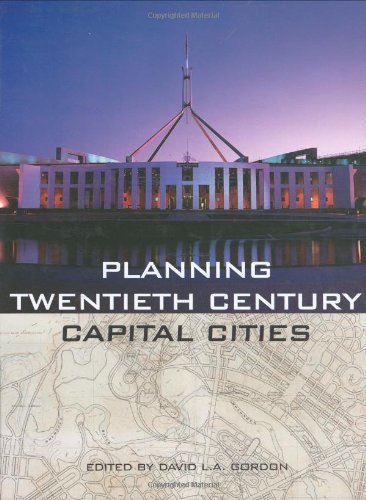

Most ebook files are in PDF format, so you can easily read them using various software such as Foxit Reader or directly on the Google Chrome browser.
Some ebook files are released by publishers in other formats such as .awz, .mobi, .epub, .fb2, etc. You may need to install specific software to read these formats on mobile/PC, such as Calibre.
Please read the tutorial at this link. https://ebooknice.com/page/post?id=faq
We offer FREE conversion to the popular formats you request; however, this may take some time. Therefore, right after payment, please email us, and we will try to provide the service as quickly as possible.
For some exceptional file formats or broken links (if any), please refrain from opening any disputes. Instead, email us first, and we will try to assist within a maximum of 6 hours.
EbookNice Team

Status:
Available0.0
0 reviews
ISBN 10: 0203481569
ISBN 13: 9780203481561
Author: David Gordon
The twentieth century witnessed an unprecedented increase in the number of capital cities worldwide – in 1900 there were only about forty, but by 2000 there were more than two hundred. And this, surely, is reason enough for a book devoted to the planning and development of capital cities in the twentieth century. However, the focus here is not only on recently created capitals. Indeed, the case studies which make up the core of the book show that, while very different, the development of London or Rome presents as great a challenge to planners and politicians as the design and building of Brasília or Chandigarh. Put simply, this book sets out to explore what makes capital cities different from other cities, why their planning is unique, and why there is such variety from one city to another. Sir Peter Hall’s ‘Seven Types of Capital City’ and Lawrence Vale’s ‘The Urban Design of Twentieth Century Capital Cities’ provide the setting for the fifteen case studies which follow – Paris, Moscow and St Petersburg, Helsinki, London, Tokyo, Washington, Canberra, Ottawa-Hull, Brasília, New Delhi, Berlin, Rome, Chandigarh, Brussels, New York. To bring the book to a close Peter Hall looks to the future of capital cities in the twenty-first century. For anyone with an interest in urban planning and design, architectural, planning and urban history, urban geography, or simply capital cities and why they are what they are, Planning Twentieth Century Capital Cities will be the key source book for a long time to come.
1. Capital Cities in the Twentieth Century
2. Seven Types of Capital City
3. The Urban Design of Twentieth Century Capitals
4. Paris: From the Legacy of Haussmann to the Pursuit of Cultural Supremacy
5. Moscow and St Petersburg: A Tale of Two Capitals
6. Helsinki: From Provincial to National Centre
7. London: The Contradictory Capital
8. Tokyo: Forged by Market Forces and Not the Power of Planning
9. Washington: The DC’s History of Unresolved Planning Conflicts
10. Canberra: Where Landscape is Pre-Eminent
11. Ottawa-Hull: Lumber Town to National Capital
12. Brasília: A Capital in the Hinterland
13. New Delhi: Imperial Capital to Capital of the World’s Largest Democracy
14. Berlin: Capital under Changing Political Regimes
15. Rome: Where Great Events not Regular Planning Bring Development
16. Chandigarh: India’s Modernist Experiment
17. Brussels: Capital of Belgium and ‘Capital of Europe’
18. New York City: Super-Capital – Not by Government Alone
19. What is the Future of Capital Cities?
planning twentieth century capital cities
planning the twentieth century city
planning the twentieth-century city the advanced capitalist world
twentieth century city
planning the capitalist city
Tags: David Gordon, Planning, Capital